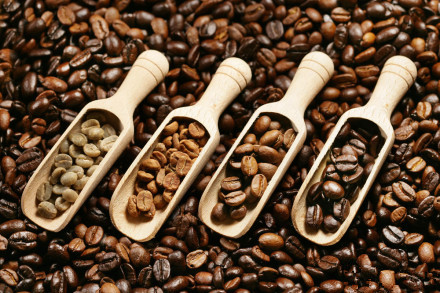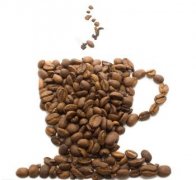Coffee and its products-- terminology (2)

3.19 Pulper--mipped bean
Wet processed coffee beans cut or rubbed during peeling, often with brownish black scars.
3.20 Brown coffee beans
Brown and black coffee beans.
3.21 White coffee beans
Simply called white beans, that is, coffee beans with a white surface.
3.22 amber bean
yellow coffee bean, usually translucent.
3.23 waxy bean
Coffee beans with translucent waxy appearance, color from yellow green to dark red brown, with dark red brown most
Typical. The silver skin sticks to the coffee beans.
3.24 Carbonized beans
Coffee beans carbonized during roasting, black, charcoal like in texture, easily crushed by hand
Fine particles.
3.25 Pale bean
This roasted coffee bean is much lighter in color than other roasted coffee beans.
3.26 Vile--smelling bean
This roasted coffee bean gives off an unpleasant odor and is usually roasted from stinky or sour coffee beans.
fried.
3.27 foreign matter
It is not the original minerals and animal and plant residues in coffee berries.
3.27.1 Large stone
Stones that do not pass through a circular sieve with an aperture of 8 mm.
3.27.2 Medium stone
Stones that can pass through a circular hole sieve with an aperture of 8 mm, but cannot pass through a circular hole sieve with an aperture of 4.75 mm.
3.27.3 Small stone
Pebbles that pass through a 4.75 mm round hole sieve.
3.27.4 Large stick
Twig about 3 cm long (usually 2~4 cm).
3.27.5 medium stick
The twigs are about 1.5 cm long (usually 1 - 2 cm).
3.27.6 Branchlets small stick
A twig about 0.5 cm long (usually less than 1 cm).
3.27.7 clod
An aggregate formed by the agglomeration of soil particles.
3.27.7.1 large clod
clods that do not pass through an 8 mm round hole sieve.
3.27.7.2 medium clod
clods that pass through a circular sieve with an aperture of 8 mm but not 4.75 mm.
3.27.7.3 Small clod
clods that pass through a 4.75 mm circular sieve.
3.28 Coffee beans with husks
Dried coffee, not shelled.
4 Processing
4.1 dry process
The method comprises drying fresh coffee into dried fruit, and mechanically removing the dried peel to prepare green coffee.
4.1.1 Drying of cherry coffee
This operation reduces the moisture content of fresh coffee to facilitate shelling and preservation.
4.1.2 Dehusking
Remove coffee shells mechanically.
4.2 wet process
Coffee fresh fruit in the aqueous medium, with mechanical peeling, fermentation and then mechanical friction degumming, and through
washing, drying and processing.
4.2.1 Flotation
The collected coffee cherries are subjected to preliminary sorting with water so as to separate dried fruit, moth-eaten fruit, exotic fruit,
Impurities, etc. are removed from coffee berries to facilitate peeling.
4.2.2 Pulping
It's called peeling. Remove exocarp and mesocarp as much as possible by mechanical means.
4.2.3 Fermentation degumming process
A layer of colloid mesocarp adhered to the seed coat is fermented into soluble substances, which is convenient for
Remove with water.
4.2.4 Washing
Remove all sticky mesocarp remaining on the seed coat surface with water.
4.2.5 Drying of parchment coffee
Drying the coated coffee beans to a certain moisture content, so that they can be removed under good technical conditions.
Keep coffee from spoiling in later storage.
4.2.6 Removing clothing hulling
Remove the dry coat of the coated coffee beans to prepare green coffee.
4.3 triage;sorting
Sift out foreign impurities, coffee bean fragments and defective coffee beans from green coffee with a sieve to remove impurities, coffee bean fragments and defective coffee beans.
Coffee beans are graded.
4.4 compounding
Coffee from different varieties and origins has different aromas and ingredients. This operation is to combine various coffee beans
Reasonable blending, so that the coffee powder has a specific flavor, to ensure the quality of coffee powder
Sex.
4.5 Roasting
This heat treatment causes significant chemical and physical changes in the structure and composition of green coffee, resulting in
The coffee beans darken and emit the aroma characteristic of roasted coffee.
4.6 blending
Different ingredients are mixed into roasted coffee to improve the drinking quality of coffee powder and adapt to different regions.
Drinking habits.
4.7 grinding
Roasted coffee beans are mechanically ground into coffee powder.
5 Tests
5.1 Coffee berry oil coffee aroma.
5.3 caffeine
Also known as caffeine, it is an alkaloid extracted from coffee with the molecular formula C8H10N4O2.
5.4 sampling
5.4.1 Coffee sampler coffee trier
Made of smooth metal, suitable for sampling through the side of sealed bags.
5.4.2 Multi-layer sampler multi--level trier
A specially designed particle sampler for sampling instant coffee.
5.4.3 Sample
A portion of coffee extracted from a batch of coffee and used to test the characteristics of the batch.
5.4.4 Basic sample increment;;primary sample
30 g ±6 g coffee beans taken from a bag or 100 g coffee beans taken from a box of a batch of coffee
g ±20 g of instant coffee.
5.4.5 Mixed sample bulk sample;lot sample
Also known as batch sample, is a batch of coffee cargo sampling bags or boxes taken in all the sample combined
Together, the quantity is not less than 1500 g coffee beans or 1000 g instant coffee.
5.4.6 Blended bulk sample
Coffee obtained by combining and blending all the base samples taken from each sampling bag box of a coffee shipment
Beans or instant coffee.
5.4.7 Laboratory sample;final sample
Coffee beans or instant coffee taken from a blended sample of a shipment. Not less than 300 g.
5.5 olfactory examination
Place the nose as close as possible to the whole sample, inflate it vigorously, and check whether the smell of coffee is normal.
5.6 visual examination
Check the general appearance of laboratory samples to determine the variety, type and overall color of coffee
Color and its uniformity.
5.7 moisture content
Under the condition of eliminating interference reaction, green coffee reaches vacuum stable level with atmosphere with zero water vapor pressure
Weight loss in time.
5.8 Loss in mass by heating
Moisture and small amounts of volatiles evaporated from green or instant coffee under prescribed heating conditions.
5.9 insoluble matter content
Particles remaining in an instant coffee solution on a filter sheet with 100μm square mesh.
5.10 Particle size analysis
The particle size of green or instant coffee is determined by manual or mechanical sieving with a test sieve.
5.11 bag
International trade is usually used to package coffee beans, a bag of coffee beans weighs 60 kg.
5.12 Case
used to package instant coffee, usually made of cardboard of suitable strength and lined with moisture resistant material
Sealed liner, net weight of 40 kg per carton.
One of the main components of coffee beans, its acid value affects the quality of coffee taste.
5.2 Caffeol
Sub-formula C8H10O2, oily, it is also called coffee sesame oil, in the roast coffee can make coffee beans coffee
Important Notice :
前街咖啡 FrontStreet Coffee has moved to new addredd:
FrontStreet Coffee Address: 315,Donghua East Road,GuangZhou
Tel:020 38364473
- Prev

Coffee and its products-terminology
The national standard of the people's Republic of China Coffee and its products Vocabulary GB/T 18007 1999 terms for coffee and its products this standard specifies the most commonly used terms for coffee and its products. This standard is applicable to the formulation and revision of relevant standards and documents, as well as the preparation and translation of professional manuals, teaching materials, books and periodicals. 2 Coffee nouns and definitions 2.1 General techniques
- Next

Coffee and its products-- terminology (3)
Appendix A (standard appendix) Hanyu Pinyin Index A F Arrabal coffee 6.1.2 moldy beans 3.18 concave grains 3.3 fermentation degumming 4.2.3 flotation 4.2.1 B G white beans 3.21 semi-black beans 3.10 dried fruits 2.2.7 roasted 4.5 dry clothes 2.2.4 roasted coffee 2.1.19 dried beans 3.17 flat beans 2.1.8 dry processing 4 .1 Meat peeling 4.2.2 dry processing of coffee beans 2.1.14 No
Related
- Beginners will see the "Coffee pull flower" guide!
- What is the difference between ice blog purified milk and ordinary milk coffee?
- Why is the Philippines the largest producer of crops in Liberia?
- For coffee extraction, should the fine powder be retained?
- How does extracted espresso fill pressed powder? How much strength does it take to press the powder?
- How to make jasmine cold extract coffee? Is the jasmine + latte good?
- Will this little toy really make the coffee taste better? How does Lily Drip affect coffee extraction?
- Will the action of slapping the filter cup also affect coffee extraction?
- What's the difference between powder-to-water ratio and powder-to-liquid ratio?
- What is the Ethiopian local species? What does it have to do with Heirloom native species?

